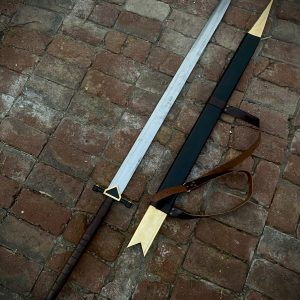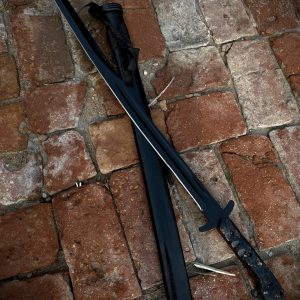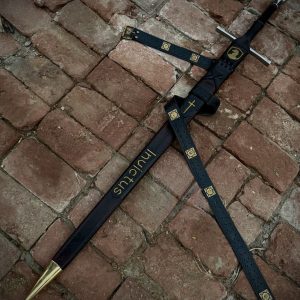Historical Background & Reference
The design of this sabre is inspired by rare surviving examples from medieval Bulgaria, particularly from the 13th to 15th centuries, during the time of the Second Bulgarian Empire (1185–1396) and the subsequent period of Ottoman influence. The archaeological finds and reconstructed illustrations suggest a weapon that skillfully blends Eastern curvature with European structural design, characteristic of the Balkan region — a historic crossroads of cultures and empires.
These sabres typically featured:
Curved, single-edged blades ideal for fast, sweeping slashes from horseback.
Minimal ricasso, maximizing the cutting edge.
Straight cross-guards with flared ends, providing effective hand protection.
Tapered one-handed grips, often fitted with wooden cores and bronze or brass hardware.
Wide cylindrical or disc-like pommels, adding balance and secure handling.
Scabbards made from wood and wrapped in leather or textile, often equipped with metal chapes and suspension rings.
Such weapons were likely wielded by cavalrymen, nobles, and elite guards, prized for their agility and battlefield versatility. Given the limited number of complete historical specimens, every modern reproduction is a careful blend of authentic archaeological reference and practical weaponcraft, bringing a lost martial heritage back to life with thoughtful craftsmanship.










Reviews
There are no reviews yet.